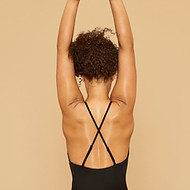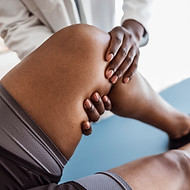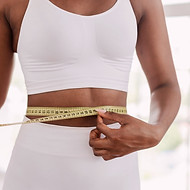
Of Good Cheer Wellness
Art Body Soul

About: Mat Pilates
Mat Pilates was invented by Joseph Pilates, born in Germany 1883. Joseph was a sports enthusiast and participated in sports such as Boxing, Diving, Gymnastics, Martial Arts, Skiing, and Wrestling. He also had a keen interest in Greek mental discipline practices of balancing mind, body and spirit.
It was Aristotle's opinion that the soul and body are not separate entities but rather, two mutually complementary and inseparably connected aspects. One and the same entity. Science today is in the early phases of beginning research into consciousness due to the complexity of measurement and quantifiability. Science is catching on. And with that, the Western world's understanding deepens to face the integral effects of, the mind body connection e.g. vagus nerve, gut-brain connection and muscle fascia.
Joseph Pilates called his method Contrology and defined it as the complete coordination of body, mind and spirit. Contrology was created in order to develop the body uniformly, restore physical vitality, correct wrong postures, invigorate the mind and elevate the spirit. (1,2)
Since its creation, Pilates has become a popular form of exercise that has recently become increasingly widespread in rehab. It aims to strengthen the transverse abdominal, lumbar multifidus, pelvic floor, and diaphragm muscles (the core muscles), and to extend and stretch the lumbar spine muscles. This reduced strain on the spine and stabilizing it. (3)
The Value of Mat Pilates
The idea of balancing mind, body and spirit, is the heart of OGC.
No matter what ebbs and flows we experience, we can find the means to integrate each of the dimensions of wellbeing in our daily lives. Find harmony, strength and connection within ourselves, and consistency in showing up for ourselves by the actions we take.
Muscle Benefits

It targets all those "deep" muscles that hold your body together—especially your core. No jumping, just smart, controlled movements.
It builds strength, control, and better posture. You’ll notice everyday movements (like standing or walking) feel smoother and easier.
Joints Benefits

It's low impact—kind to your joints—but still gets you mobile. Think smooth, flexible movements that keep your body feeling youthful.
It improves flexibility and eases joint pain. Great if you’ve got stiffness or old injuries—it keeps you moving without the ouch.
Body Composition

It tones you up without bulking you up. Think stronger core, leaner muscles, and feeling good in your skin.
It boosts lean muscle and helps reduce body fat over time. Even when you take a break, the benefits can stick around longer than you’d think!
Brain Benefits

Pilates is like meditation while moving. You slow down, breathe deeply, and get super in tune with your body.
It helps you feel calmer, less stressed, and more focused—like a mental reset button. Your brain gets sharper and more aware of how your body moves.
Social Benefits

You’re moving with others, often in a group class. It’s a team-like vibe but chill—no competition, just connection.
It builds a sense of belonging and community. You’re more likely to show up, stay consistent, and feel emotionally supported.
References
1) J,Pilates. & W, Miller. (1945). Pilates' Return to Life Through Contrology. (cited 2025 Mar 21). Available from: http://www.hermit.com/hermit/art/control.pdf
2) J,Pilates. & W, Miller. (2010). Pilates' Return to Life Through Contrology. Presentation Dynamics. p.11
3) Batibay, S., Külcü, D. G., KaleoBatibağlu, Ö., & Mesci, N. (2021). Effect of Pilates mat exercise and home exercise programs on pain, functional level, and core muscle thickness in women with chronic low back pain. Journal of orthopaedic science : official journal of the Japanese Orthopaedic Association, 26(6), 979–985. DOI: 10.1016/j.jos.2020.10.026
4) Cruz, J. C., Liberali, R., Fonseca da Cruz, T. M., & Netto, M. I. A., (2016). The Pilates method in the rehabilitation of musculoskeletal disorders: a systematic review. SciELO Brazil. DOI: 10.1590/1980-5918.029.003.AO19
5) Denham-Jones, L., Gaskell, L., Spence, N., & Pigott, T. (2022). A systematic review of the effectiveness of Pilates on pain, disability, physical function, and quality of life in older adults with chronic musculoskeletal conditions. Musculoskeletal care, 20(1), 10–30. DOI: 10.1002/msc.1563
6) Zaras, N., Kavvoura, A., Gerolemou, S., & Hadjicharalambous, M. (2023). Pilates-mat training and detraining: Effects on body composition and physical fitness in pilates-trained women. Journal of bodywork and movement therapies, 36, 38–44. DOI: 10.1016/j.jbmt.2023.05.002